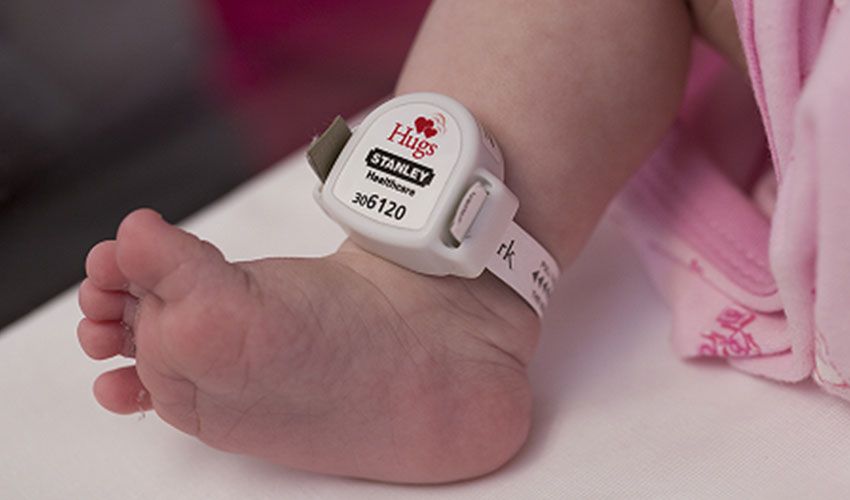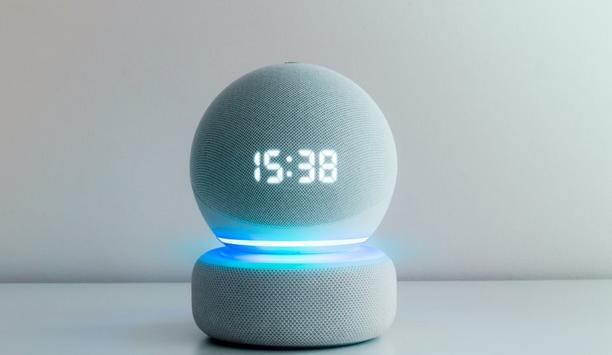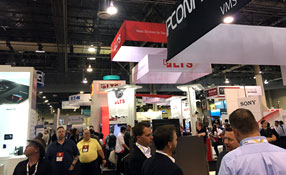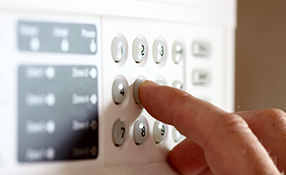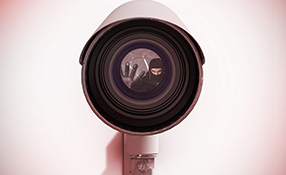Wireless tracking and radio frequency identification (RFID) continue to improve dramatically in range and reliability, allowing Real-Time Location Systems (RTLS) pinpointing people, places and things with impressive accuracy. Systems integrator Advance Technology Inc. (ATI), Scarborough, Maine, recently installed a comprehensive, hospital-wide solution at the newly opened Boston Medical Center’s (BMC) Women and Infants Center to provide detection and protection for newborns throughout the facility.
The web-browser based system from Stanley Healthcare called the Hugs® Infant Protection Solution is based on the AeroScout® Wi-Fi RTLS platform and MobileView® software. Rob Simopoulos, president of the security and audiovisual managed services firm, said ATI worked in tandem with the Department of Public Safety’s Luigi Martiniello, Assistant Director of Operations and Public Safety, IT Department, Stanley Healthcare, hospital personnel and other stakeholders to install the solution successfully on the hospital’s Wi-Fi network. The installation is one of the first in the New England region.
“It’s a full deployment, meaning it tracks the location of babies and provides protection anywhere the infant may be transported, instead of being confined to areas limited to hardwired receivers and repeaters common to other infant protection systems,” said Simopoulos. “It was our first deployment – a highly IT-centric solution that required certification and training by our skilled technicians prior to installation.”
 |
| In alarm, when an unauthorized person tries to leave the area with a protected child, magnetic doors lock down instantly and hold specified elevators |
Quick Access To Location Of Tagged Infants
Nurses, administration and other hospital personnel have immediate access to the location status of tagged infants through PC or mobile devices via the MobileView enterprise platform, which serves as the graphical user interface (GUI) for scheduling, control, history and alerts. They can easily place tags into transport mode when an infant needs to leave the floor, but still track the location of these patients ongoing in real-time wherever they travel.
Bob Gilbert, ATI’s remote technical support supervisor, said the reliability and integrity of the solution is extremely robust, with tags transmitting every 10 seconds. During installation, which was completed in a fast turnaround of several weeks, ATI used heat-mapping capability to ascertain the density of Wi-Fi access point coverage and assimilate effective distances of RF signals from the tags.
The installation included two dedicated, high-availability servers for redundancy and back up. The MobileView platform is installed in the Public Safety Department’s Command and Control Center and integrates with Lenel by United Technologies OnGuard Security Management System.
Other Highlights Of The Security Installation:
- The system integrates to all door contacts, access control readers, audible alarms and elevator controls.
- Exciters, which also act as access points, are installed at every entrance/exit point and work independently should they lose network connectivity, allowing the doors to still lock down in alarm.
- ATI worked closely with the elevator contractor to implement input controls to prevent the elevator door from opening if a tag is sensed at the door. The access control system also will not unlock if an infant tag is present on the other side of the opening, even when a valid proximity badge is presented.
The solution may also be deployed for asset tracking and management, with ATI looking to incorporate that functionality in the near future
- In alarm, when an unauthorized person tries to leave the area with a protected child, magnetic doors lock down instantly and hold specified elevators.
- The system can integrate with hospital communication and information systems, strobe lights, sounders and audible devices and video surveillance cameras to capture and view images before an exit alarm occurrence.
- The solution may also be deployed for asset tracking and management, with ATI looking to incorporate that functionality in the near future.
Real-Time Location System Improves Protection And Detection Status
“Our goal is to continue to learn and embrace new technology to provide our customers the best protection and detection,” continued Simopoulos. “Providing the hospital with the ability to achieve real-time status and location of system tags beyond the mother-baby unit is critical. Nearly 20 percent of hospital abductions in the U.S. happen outside this area, according to the National Center for Missing and Exploited Children. In the past, once infant tags left the range of proprietary receivers in the protected area the infant’s whereabouts became unknown.”
